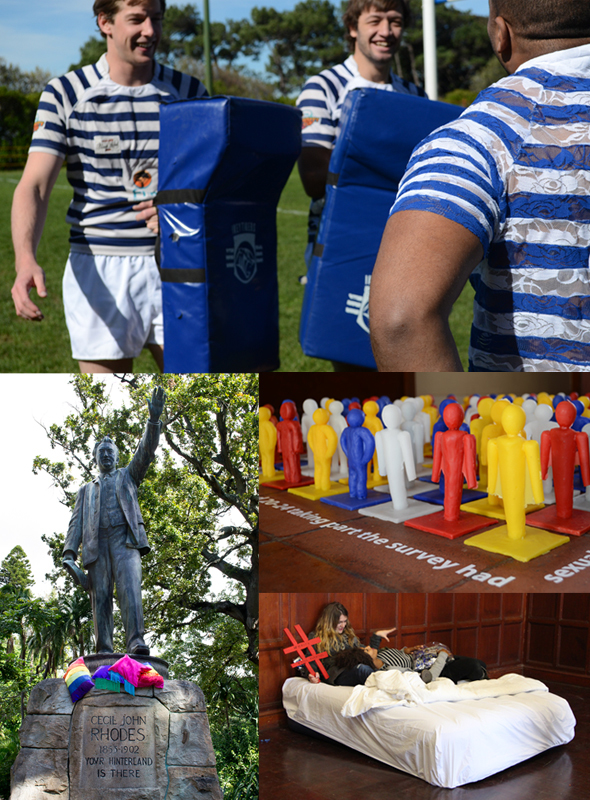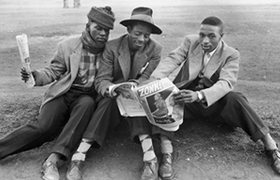The art of honest conversation
17 June 2014
The UCT first rugby team donned lace and felt practice jerseys for Liesl Brenzel's project which challenged perceptions of masculinity. Her work was part of a third-year elective for new media students - a result of a partnership between the Michaelis School of Fine Art and HAICU.
- By placing rainbow cushions against more impervious structures in and around the campus and city, third-year Michaelis student Julia Kabat invites passers-by to consider the vulnerability and fragility of those who experience prejudice.
- Made from hollow-cast wax, Julian Gasson and Raees Saaiet's third-year installation One Hundred Hollow Men refers to both the literal hollowness of the figures, and rigid masculine qualities sometimes favoured in society rather than inner strength.
- HIV stigma was the focus of this first-year Michaelis student's installation in the Molly Blackburn Hall. With the aim of making people confront their own prejudices around HIV/AIDS-related issues, students lounge against pillows made from condoms, taking the 'private' - in this case a bedroom - into a public space.
A group of third-year Michaelis School of Fine Art students have been experimenting with everyday objects, using them in public art interventions to open up spaces for what can sometimes be difficult conversations: around gender, sexual identity, and the choices we make.
When sculpture student Liesl Brenzel dressed the UCT first rugby team in practice jerseys made of lace and felt, she was making a statement about perceptions of masculinity. After the practice session, the team signed a jersey and Brenzel had it box framed, to replicate the traditional aesthetic of rugby memorabilia.
This 'public intervention', titled Die Manne, was for a third-year new media elective, 'Public Practice and Socially Responsive Art: Exploring masculinities and HIV/AIDS.' According to the elective outline, there's a dearth of knowledge focused on the relationship between HIV, retroviral treatment and masculinity. Through this work, Brenzel wanted to investigate how these men would be perceived if there was any change to the status quo.
To try to address this knowledge gap and encourage critical discussion and reflection, Michaelis School of Fine Art elective lecturer Fabian Saptouw and his students have been working in partnership with UCT's HIV/AIDS, Inclusivity and Change Unit (HAICU) since 2012, exploring the connection between contemporary constructions of masculinity and HIV through art production and intervention.
"Art is being used in public spaces in an informal and interactive way, making it widely accessible, to engage people about HIV/AIDS," says Saptouw. "Our students are not standing back from tackling social issues and messages. And this is where art and education intersect."
Many of the artworks use everyday objects to convey their messages and create space for discussion.
"In that process of doing, and in discussion, is where the shift happens in the students' understanding of these social issues and the artwork," says Saptouw.
Thinking and process are vital to the ways we look at the world; and as much as the art is about meaning, it's also about the process of making, acting and creating art, he explains.
"The process gets the students thinking critically about how we understand the role of art. On a small scale these projects are shifting people's relationship to art as well. Creating an artwork in response to these social issues gives students agency, and they become active participants in the discussion instead of passively absorbing information. They feel they are doing something."
As the students' public artworks open up issues around HIV/AIDS, students begin to talk to other students. "And in speaking to their peers, the students become HAICU ambassadors," notes Saptouw.
Story by Helen Swingler. Photos courtesy of Fabian Saptouw.
 This work is licensed under a Creative Commons Attribution-NoDerivatives 4.0 International License.
This work is licensed under a Creative Commons Attribution-NoDerivatives 4.0 International License.
Please view the republishing articles page for more information.









